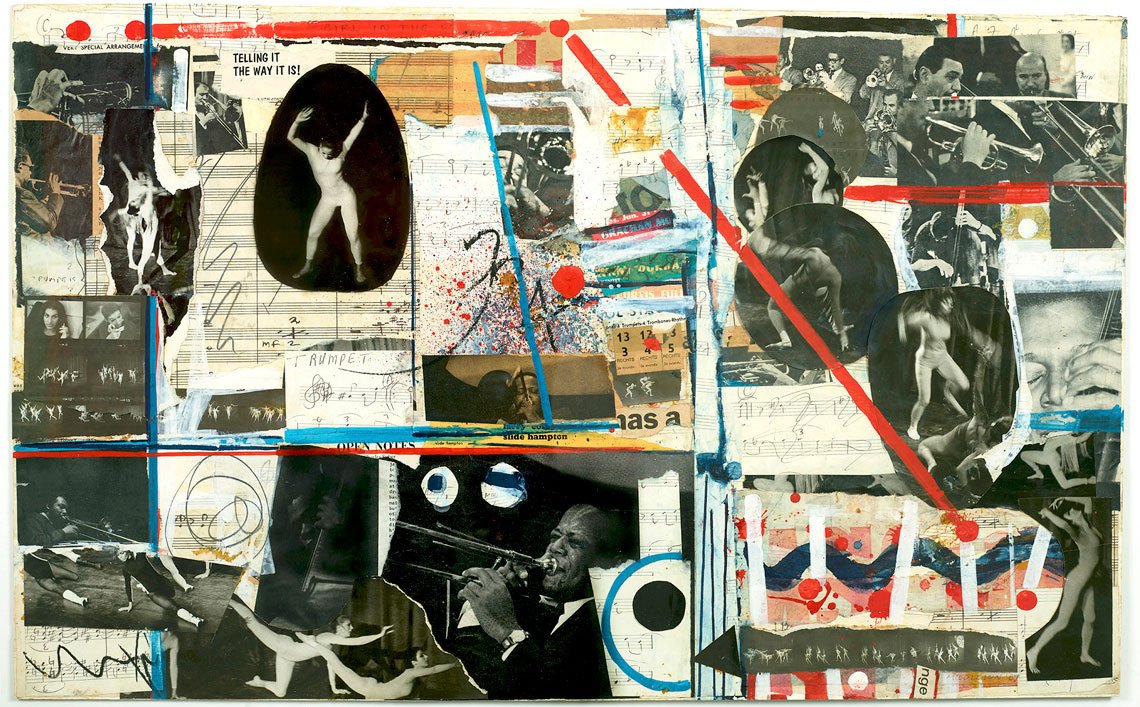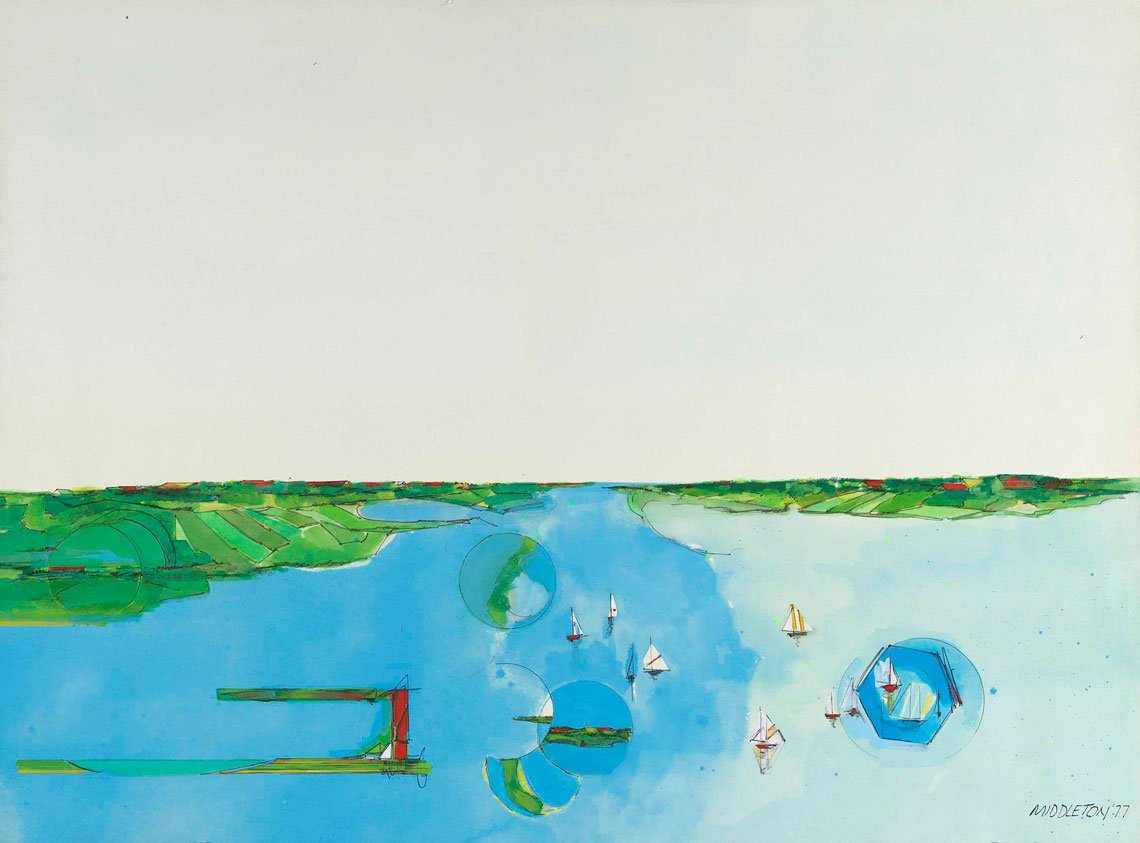Sam Middleton Dream Fantasy Works from 1962-1998
 |
Sam Middleton, Telling it The Way It IS, 1969. Mixed media and collage on board, 17-3/4 x 28-1/2 inches. Signed and dated lower right. |
Sam Middleton: Dream Fantasy
Works from 1962–1998
At Spanierman Modern, 958 Madison Avenue, Second Floor, New York
Through January 13, 2024
212.249.0619 – spaniermanmodern.com – info@spaniermanmodern.com
Music is the inspiration for the work of Sam Middleton (1927–2015), the subject of a defining retrospective on view at Spanierman Modern in New York.
Middleton was born in Harlem in 1927 and grew up in and around the lively upper Manhattan musical scene. He chose, however, to express himself through art, and while he was self-taught as a painter, Middleton found friends and favor among the Abstract Expressionists, chiefly Franz Kline and Robert Motherwell, who helped and encouraged him.
 |
Sam Middleton, Melody, 1975. Mixed media collage, 14-1/2 x 20 inches. Signed and dated lower right. |
 |
Sam Middleton, Cool Breeze, 1977. Mixed media collage, 30-1/2 x 41-1/4 inches. Signed and dated lower right. |
Middleton was Black, which was a problem in a segregated society. So he left the United States at the suggestion of Kline and moved to Holland where he spent the rest of his life. He continued to make art and achieved some success, but his work and story have remained unfairly sidelined in American art history.
 | |
Sam Middleton, Cymbals, 1962. Mixed media on paper, 25-1/4 x 17-3/4 inches. Signed and dated lower right Middleton ’62. |
The present show aims to redress this oversight and happily make a strong case for Middleton’s importance as an abstract painter. This is, simply put, a gorgeous show — the paintings are beautiful, lively, intelligent, and pleasing. They are abstract in style, but with expressive, even melodious brushwork that gives them soul.
Color is an important element in his paintings and is also something he constantly experimented with. There is figurative imagery in some of the paintings, but this has less to do with the images themselves than with a formal interest in the use of collage, which is the most noticeable and consistent stylistic trope characterizing works in this show. Every artwork is a patchwork of imagery, ideas, and materials. Works combine random brushstrokes with paper and magazine imagery that has been cut, ripped, stuck, or painted onto a support.
Elements of sheet music and collaged imagery of musicians playing instruments are also frequent materials in these paintings. The sheet music is illegible, but it is clear from the type of imagery he chooses that jazz is an inspiration for the artist. It is not surprising, given his upbringing, and likely explains the origin of his improvisational approach to art making for jazz is, as we know, a hybrid musical genre defined by the freedom of improvisation.
Romare Bearden, in the introduction to a 1972 exhibition catalog of the artist’s work in Amsterdam, wrote of the importance of jazz and music in general for the artist. But he also noted the importance of geometric forms and color for Middleton, specifically how his paintings frequently contain, to quote Bearden, “linear arcs of color…..that appear to liberate themselves from fixed points,” as well as the way Middleton often sets up “a cadenced relationship of tilted rectangles, which turn out from the centers of his paintings.”
 |
Sam Middleton, Adagio, 1988. Mixed media collage, 20-1/2 x 30-1/4 inches. Signed and dated lower right. |
 |
Sam Middleton, Ella, 1998. Mixed media collage, 30-1/2 x 42-1/4 inches. Signed and dated lower right. |
Bearden, a celebrated painter, recognized and shed light on the geometric and intellectual foundation at the core of these paintings. Untitled (1973), is an example of what Bearden referred to, for it is a geometric abstraction that looks as if it had been run through a washing machine; forms run and blur. Melody (1975), from the same period, revolves around a central rectangular form, as do several other later works included in this exhibition.
The paintings in this show span four decades and reveal an artist with a plethora of ideas. He never stopped creating art or evolving as an artist, though for me his later more colorful, collage-based pieces sing loudest to a contemporary ear. Clear Blue (1989), Ella (1998), Adagio (1988), and Rhythm Section (1985) are joyous, melodious, pleasing images that have held up remarkably over the decades.
After he left the United States and settled in Holland, he began to be influenced by his new environment — you can see influences of the Dutch landscape in several paintings here, but his work remained grounded in the New York post-painterly abstraction of the 60s and 70s. This is abstract art with a powerful, compelling story to tell.
 |
Discover More From Spanierman Modern on Incollect
 |
 |



























